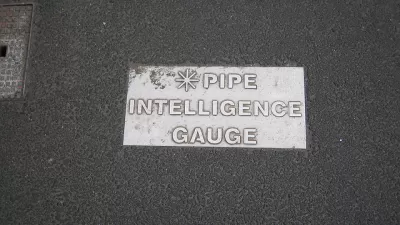While 2019 doesn’t scream smart city revolution, we are seeing signs of significant smart city evolution.

Smart cities and all their fancy gadgets won’t magically appear. Cities have to plan for them, infrastructure must be built to support them, and regulations surrounding their operations must be set.
In this regard, if 2018 was the year of the smart city skeptic, as CityLab wrote in December, then 2019 may well be the year of a smart city revival.
For starters, there has been an uptick in smart city strategic planning, according to Roland Berger’s second smart city index, released in early March.
Despite "smart cities" being an agenda item in city halls for many years, the reality is that most cities haven't been taking a strategic approach to their "smart" status.
This trend appears to be shifting, however. The number of cities with a smart city strategy has almost doubled in the past two years, rising from 87 to 153.
While that is a considerable jump, Roland Berger, a global consulting firm, warns that good strategy is only the first step; it's implementation that really counts.
Seen that way, there is still plenty of room for improvement, as 90 percent of those cities surveyed still don’t have an integrated plan with a single entity in charge of coordinating work, and clear responsibilities for the different groups involved.
Cities that do have a central decision-making body, like Vienna with its Smart City Agency or London with its Chief Digital Officer, perform well on implementation and lead the rankings as a result.
Planning aside, 2019 is also turning out to be a pivotal year for the rollout of 5G technology—considered to be the connective tissue for the internet of things, smart cities, and even autonomous vehicles.
Unlike the current 4G networks, which rely on signals that transmit for miles by large cell towers, 5G will need small cell sites every few hundred feet to broadcast its short-range signals.
And if you've been paying attention to the headlines, the U.S. and China are locked in a heated battle over who will get the chance to build this next generation of telecommunication infrastructure, as all the major contracts to build out 5G networks across Europe and the U.S. will be signed in the next 6-18 months, according New Times reporting.
Both superpowers realize that whoever controls these 5G networks has the advantage—in times of war and peace. After all, the 5G system is a physical network of switches and routers, and what is good for consumers is also good for intelligence services and cyberattackers.
To curtail Chinese companies form winning these buildout contracts, the Trump administration has pushed for a ban on Huawei technology in UK, Australia, Poland, the European Union, the Philippines, and a slew of other countries.
U.S. Ambassador to Germany Richard Grenell sent a letter to the German government in early March, for instance, threatening to curtail German access to U.S. intelligence if Berlin decides to issue contracts to Huawei, according to a U.S. official familiar with the matter.
While U.S. efforts to ban Huawei 5G technology overseas have stumbled, Australia, Japan, Taiwan, and the U.S. have all decided to ban and phase out the company’s products.
The Trump administration is doubling down on the Huawei ban by also promoting elements of a leaked memo from the National Security Council to the White House on his 2020 campaign trail, which called for an unprecedented federal takeover of a portion of the nation’s mobile network to pay for and build a nationalized 5G network.
Key to Trump's domestic strategy is a set of new federal regulations aimed at streamlining 5G infrastructure installation by limiting the authority of US cities.
The FCC in September 2018 passed a controversial set of rules—much of which went into effect on January 15—which limits municipal authorities to charging $270 per cell site per year and also imposes a "shot clock" limiting how long authorities can take to review installation requests.
The FCC argues that the new rules will free up $2 billion in capital for wireless providers to use in underserved areas like rural communities.
The new rules drew immediate protest from cities and counties around the country, and by October over 20 local governments took legal action and filed three separate suits. Each case makes the same basic argument against the FCC, claiming the federal government has overstepped its bounds and undercut local control of infrastructure issues.
Portland's Mayor Ted Wheeler has called the FCC order a "land grab against local infrastructure."
Today, more than 80 cities and counties have filed lawsuits against the FCC, and the U.S. Court of Appeals for the 9th Circuit in San Francisco is expected to render a decision in the lead case in April.
So to all the smart city skeptics out there, 2019, while it doesn’t scream smart city revolution, is already showing signs of significant smart city evolution.
Not only are cities cranking on their "smart" plans, but the US-China 5G war is heating up and U.S cities are challenging the next generation of telecom rules that may, or not, accelerate the rapid deployment of 5G technologies and services.
Oh yeah, and it’s only April.

Trump Administration Could Effectively End Housing Voucher Program
Federal officials are eyeing major cuts to the Section 8 program that helps millions of low-income households pay rent.

Planetizen Federal Action Tracker
A weekly monitor of how Trump’s orders and actions are impacting planners and planning in America.

Ken Jennings Launches Transit Web Series
The Jeopardy champ wants you to ride public transit.

Opinion: Transit Agencies Must View Service Cuts as Last Resort
Reducing service could cripple transit systems by pushing more riders to consider car ownership, making future recovery even less certain.

‘Smart Surfaces’ Policy Guide Offers Advice for Building and Maintaining Urban Tree Canopies
Healthy, robust tree canopies can reduce the impacts of extreme heat and improve air quality.

New Jersey Lawsuit Targets Rent-Setting Algorithms
The state of New Jersey is taking legal action against landlords and companies that engage in what the state’s Attorney General alleges is illegal rent fixing.
Urban Design for Planners 1: Software Tools
This six-course series explores essential urban design concepts using open source software and equips planners with the tools they need to participate fully in the urban design process.
Planning for Universal Design
Learn the tools for implementing Universal Design in planning regulations.
Heyer Gruel & Associates PA
Ada County Highway District
Institute for Housing and Urban Development Studies (IHS)
City of Grandview
Harvard GSD Executive Education
Toledo-Lucas County Plan Commissions
Salt Lake City
NYU Wagner Graduate School of Public Service





























